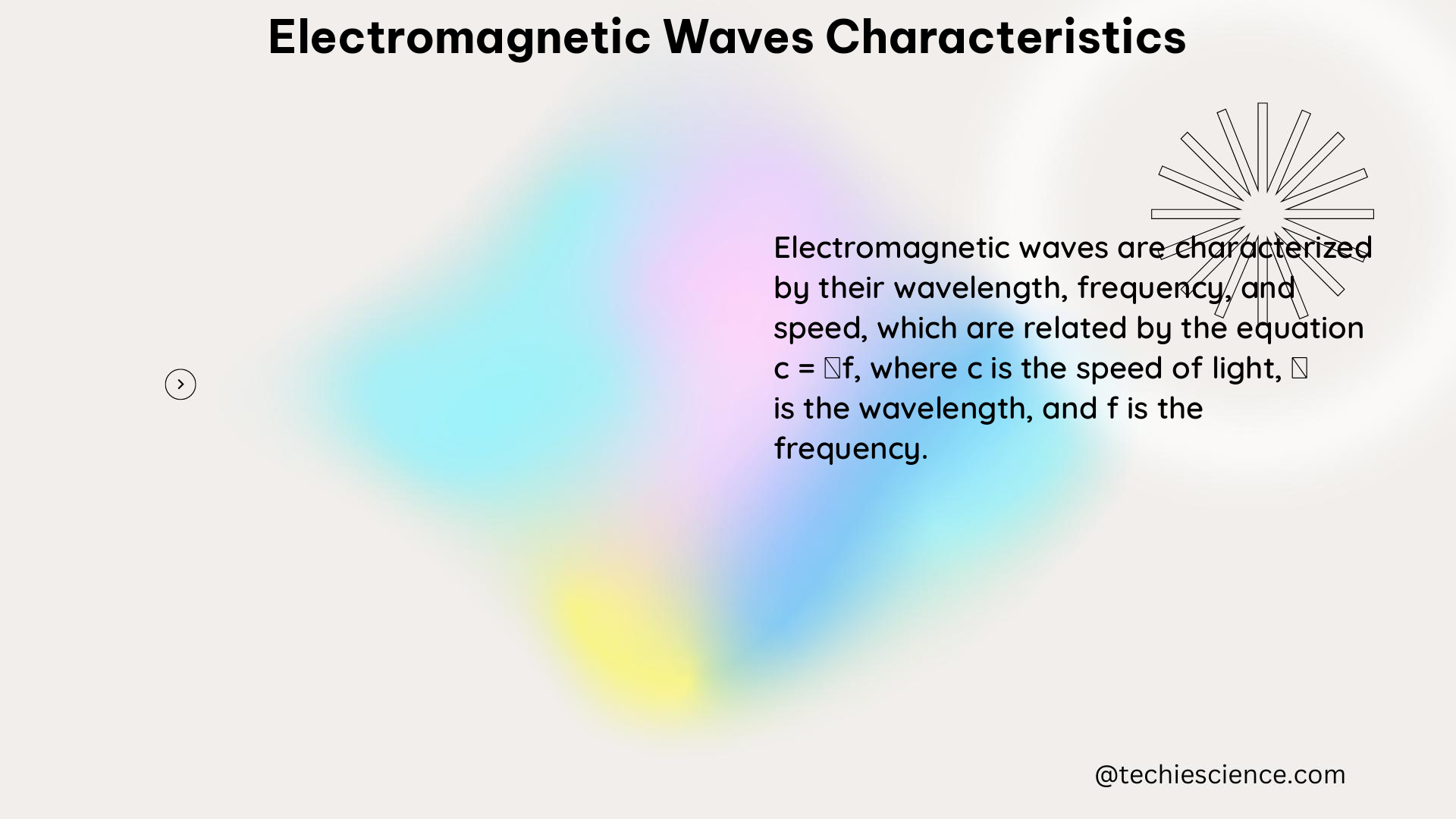Electromagnetic waves are a fundamental aspect of our physical world, with a wide range of applications in various fields, from communication to medical imaging. These waves are characterized by their wavelength, frequency, and propagation speed, which are all interconnected through the equation vW = fλ, where vW is the propagation speed, f is the frequency, and λ is the wavelength. Understanding the characteristics of electromagnetic waves is crucial for understanding and harnessing their potential.
The Electromagnetic Spectrum
The electromagnetic spectrum is a classification of electromagnetic waves based on their wavelengths and frequencies. This spectrum includes a wide range of wavelengths and frequencies, each with its unique properties and applications. The electromagnetic spectrum can be divided into several regions, including radio waves, microwaves, infrared radiation, visible light, ultraviolet radiation, X-rays, and gamma rays.
Wavelength and Frequency
The wavelength of an electromagnetic wave is the distance between two consecutive peaks or troughs of the wave. The frequency, on the other hand, is the number of complete wave cycles that pass a given point per unit of time. These two characteristics are inversely related, as described by the equation c = fλ, where c is the speed of light, which is the propagation speed of all electromagnetic waves in a vacuum.
| Electromagnetic Wave Type | Wavelength Range | Frequency Range |
|---|---|---|
| Radio Waves | 1 mm to 100 km | 300 GHz to 3 kHz |
| Microwaves | 1 mm to 1 m | 300 GHz to 300 MHz |
| Infrared Radiation | 0.74 μm to 300 μm | 400 THz to 1000 GHz |
| Visible Light | 400 nm to 700 nm | 790 THz to 400 THz |
| Ultraviolet Radiation | 400 nm to 10 nm | 790 THz to 30 PHz |
Propagation Speed
The propagation speed of all electromagnetic waves in a vacuum is the speed of light, which is approximately 3 × 10^8 m/s. This speed is a fundamental constant of nature and is denoted by the symbol c. In other media, such as air or water, the propagation speed of electromagnetic waves may be slightly different due to the refractive index of the medium.
Characteristics of Electromagnetic Waves

Electromagnetic waves exhibit several key characteristics that are important to understand:
Energy and Penetration
High-frequency electromagnetic waves, such as X-rays and gamma rays, are more energetic and have a greater ability to penetrate matter than low-frequency waves, such as radio waves. This is due to the higher energy of the individual photons that make up high-frequency waves.
Information Carrying Capacity
High-frequency electromagnetic waves can carry more information per unit time than low-frequency waves. This is because the higher frequency allows for a greater number of wave cycles to be transmitted in a given time, enabling the transmission of more data.
Resolution and Wavelength
The shorter the wavelength of an electromagnetic wave, the smaller the detail that can be resolved when the wave interacts with a material. This is why shorter-wavelength waves, such as X-rays and ultraviolet radiation, are used in high-resolution imaging techniques, while longer-wavelength waves, such as radio waves, are better suited for large-scale applications.
Applications of Electromagnetic Waves
Electromagnetic waves have a wide range of applications in various fields, including:
- Communication: Radio and television broadcasting, satellite communication, and wireless internet rely on the transmission of electromagnetic waves.
- Radar: Electromagnetic waves, particularly microwaves, are used in radar systems for detection, tracking, and navigation.
- Medical Imaging: Electromagnetic waves, such as X-rays and magnetic resonance imaging (MRI), are used in medical imaging techniques to diagnose and monitor various health conditions.
- Spectroscopy: Electromagnetic waves are used in spectroscopic techniques to analyze the composition and structure of materials.
- Astronomy: Astronomers use various regions of the electromagnetic spectrum, from radio waves to gamma rays, to study the universe and its celestial objects.
Conclusion
Electromagnetic waves are a fundamental aspect of our physical world, with a wide range of characteristics and applications. Understanding the relationship between wavelength, frequency, and propagation speed, as well as the unique properties of different regions of the electromagnetic spectrum, is crucial for harnessing the potential of these waves in various fields of science and technology.
References
- Electromagnetic Differential Measuring Method: Application in … (https://www.ncbi.nlm.nih.gov/pmc/articles/PMC5539693/)
- 5.2 The Electromagnetic Spectrum – Astronomy 2e | OpenStax (https://openstax.org/books/astronomy-2e/pages/5-2-the-electromagnetic-spectrum)
- Electromagnetic Waves | Properties, Examples and Their Uses – Turito (https://www.turito.com/blog/physics/electromagnetic-waves)
- The Electromagnetic Spectrum | Physics – Lumen Learning (https://courses.lumenlearning.com/suny-physics/chapter/24-3-the-electromagnetic-spectrum/)

The lambdageeks.com Core SME Team is a group of experienced subject matter experts from diverse scientific and technical fields including Physics, Chemistry, Technology,Electronics & Electrical Engineering, Automotive, Mechanical Engineering. Our team collaborates to create high-quality, well-researched articles on a wide range of science and technology topics for the lambdageeks.com website.
All Our Senior SME are having more than 7 Years of experience in the respective fields . They are either Working Industry Professionals or assocaited With different Universities. Refer Our Authors Page to get to know About our Core SMEs.